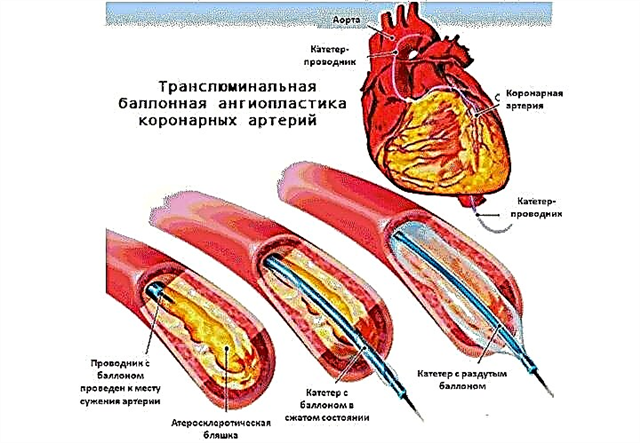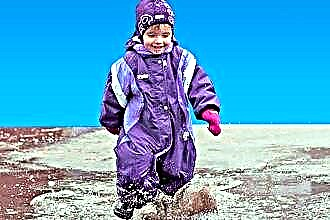Often, mothers do not pay special attention to the snot flowing from the baby's nose, especially if there is no fever and a strong cough. Say, immunity will work and everything will pass by itself. This irresponsible attitude often leads to very serious consequences. It is necessary to treat a runny nose, especially if the snot is thick, viscous and have a yellowish-green color! Moreover, to treat immediately and correctly. Since its very appearance is a clear signal that something has gone wrong in the body. There are many ways how to cure thick snot in a child, but only a pediatrician should select them - improper treatment can exacerbate the course of the disease.
How to find out the reason
 Before embarking on a thorough treatment, it is necessary to determine the reason why the child has a thick runny nose at all. By the way, it can be partially indicated by the color and consistency of the discharge:
Before embarking on a thorough treatment, it is necessary to determine the reason why the child has a thick runny nose at all. By the way, it can be partially indicated by the color and consistency of the discharge:
- Viscous transparent snot in a child suggests that if an infection is present in the body, then it has penetrated shallowly and it will be easy to deal with it even with folk methods of treatment. In infants, such mucus can appear for a non-infectious reason. If the air in the room where the baby is constantly located is too dry, then the delicate mucous membrane dries out quickly. To moisturize it, the body secretes transparent, viscous mucus.
- Green stringy snot in a child always indicates that pathogenic bacteria are present in the mucus. It is they who, dying in mass quantities under the attack of neutrophils, give the secretions such a color. You can fight them only with the help of antibiotics - natural or safe medicines for the child. Such a runny nose is especially dangerous for infants - mucus infected with microbes can easily penetrate the ears and bronchi.
- Yellow viscous snot in a child may indicate the onset of inflammation of the frontal and maxillary sinuses, as well as the fact that the baby has been sick for several days and his immunity is not able to overcome the ailment on its own. If the symptom is ignored, with almost 100% probability the next stage will be purulent sinusitis or frontal sinusitis, and there is not far to meningitis. Moreover, the more intense the color of the snot, the more acute the course of the disease. Bright yellow or bright orange colors are an indicator of an existing sinusitis.
In some cases, thick transparent snot in a child may be allergic. If an allergen is constantly present in the air that irritates the mucous membrane, it protects itself by active secretion of mucus. Liquid snot immediately flows out and in this case does not perform a protective function.
With chronic allergies, they become thicker, viscous and are constantly present in the nose, making it difficult to breathe and creating ideal conditions for the development of pathogenic microflora.
Treatment methods
 How to treat thick snot in a child depends solely on the cause that caused them. In the case of an infectious nature, antibiotics will most likely have to be used. Moreover, folk remedies can help only at the first stage, when the infection has not yet penetrated deep into the respiratory tract. Many mothers are afraid to give antibiotics to babies, especially babies. But here you have to rely on the opinion of a specialist. The risk of complications from infectious diseases far outweighs the likelihood of side effects.
How to treat thick snot in a child depends solely on the cause that caused them. In the case of an infectious nature, antibiotics will most likely have to be used. Moreover, folk remedies can help only at the first stage, when the infection has not yet penetrated deep into the respiratory tract. Many mothers are afraid to give antibiotics to babies, especially babies. But here you have to rely on the opinion of a specialist. The risk of complications from infectious diseases far outweighs the likelihood of side effects.
The pharmaceutical industry is not standing still. Antibacterial drugs of the latest generation have minimal side effects on the child's body, provided that the dosage and other conditions of admission are strictly observed. That is why only a pediatrician should prescribe how to treat thick snot in a child. And my mother's task is to follow all the doctor's prescriptions as clearly as possible.
For reference, below is a list of drugs that are most often prescribed for children under 12 years of age. But the final choice of drugs and their combinations should remain only with a specialist:
| Group of drugs | Popular titles | Main action |
| Antibacterial | Bioparox, Isofra, Polydex. | They kill pathogenic microflora, prevent further progression of the disease. |
| Vasoconstrictor | "Naphtizin", "Nazol", "Galazolin", "Otrivin". | Reducing the intensity of mucous secretions, eliminating puffiness, facilitating breathing. |
| For rinsing | Aqualor, Aquamaris, Miramistin. | Anti-inflammatory and antiseptic effect, cleansing the nasal passage from mucus. |
| Antiviral | Anaferon, Immunal, Interferon. | They create unfavorable conditions for the multiplication of viruses, enhance the activity of the immune system. |
| Immunomodulators | Derinat, Grippferon, IRS-19. | Stimulates the production of leukocytes, strengthens the immune system. |
| Antihistamines | Diazolin, Tavegil, Claritin. | Relieve puffiness, reduce the amount of discharge, suppress the reaction to the allergen. |
In some cases, phytopreparations give a good therapeutic effect: drops based on vegetable oils "Pinosol", a solution of chlorophyllipt on an oil basis, aerosol with camphor oil "Kameton".
They can be used independently at home even before consulting a doctor. But if within the next two days there are no noticeable improvements, you need to switch to more intensive treatment.
Preventive measures
 A healthy child with strong immunity is much less likely to suffer from colds. If such a baby has caught an infection transmitted by airborne droplets, his body is more likely to cope with the disease than from a weakened one. Even when the child has thick snot, minimal treatment is required. Therefore, the main attention should be paid to preventive measures and strengthening the immune system. This is not difficult to do. Necessary:
A healthy child with strong immunity is much less likely to suffer from colds. If such a baby has caught an infection transmitted by airborne droplets, his body is more likely to cope with the disease than from a weakened one. Even when the child has thick snot, minimal treatment is required. Therefore, the main attention should be paid to preventive measures and strengthening the immune system. This is not difficult to do. Necessary:
- provide the baby with natural food rich in vitamins and microelements;
- exercise and temper regularly;
- make sure that the child is in the fresh air for at least an hour every day;
- dress the baby in clothes made of natural fabrics according to the weather conditions;
- avoid hypothermia and overheating, being in a draft and under a working air conditioner;
- well ventilate and humidify the room in which the child is constantly located;
- appear in the clinic on time for preventive examinations.
And in any case, do not self-medicate! Even if you are a supporter of natural and traditional medicine - consult your doctor. Many doctors now only welcome such methods, and they will be happy to advise you on the natural remedies that are most suitable for your child.



